Feeling crummy with that pounding sinus pain, a sore throat that won’t quit, or a stubborn earache? The first thing that pops into your mind is probably a quick fix: antibiotics like amoxicillin. Here’s the twist—grabbing a bottle online seems way too easy now, but what’s the real score behind those tempting “no prescription needed” sites? If you’ve ever scrolled those pharmacies promising urgent delivery to your door, you’re not alone. The world’s gone digital, and buying medications over the web is as normal as ordering takeout or booking hotels. But when you’re looking for something as important as amoxicillin, you need real answers, not clickbait promises. Let’s unravel what’s really going on with online antibiotic shopping, so you don’t end up with fake meds or, worse, in a legal mess.
Understanding Amoxicillin: Uses, Risks, and Why It’s So Sought After
You’ve probably seen amoxicillin in your medicine cabinet or been handed a prescription for it at least once in your life. It’s one of the world’s most famous antibiotics—think of it as the go-to fix for ear infections, strep throat, dental abscesses, and even bronchitis. Amoxicillin’s magic comes from its ability to destroy certain bacteria by messing with their cell walls. And it’s usually well-tolerated, which means fewer stomach-twisting side effects compared to some older antibiotics. No wonder it’s on the World Health Organization’s list of essential medicines.
The downside? Taking amoxicillin when you don’t need it isn’t just pointless—it can be truly dangerous. We’re living in an age of antibiotic resistance, where some bacteria have learned to outsmart our most powerful meds. The CDC says we lose at least 35,000 people each year in the U.S. alone to antibiotic-resistant infections; it’s become a global headache. That’s why doctors urge you not to self-medicate. Plus, allergies are not unheard of—about 1 in 10 people claims a penicillin allergy, though some studies show way fewer actually are. Still, rashes, swelling, or hives after taking amoxicillin are a red flag, and in rare cases, it can trigger serious reactions like anaphylaxis.
People often confuse common colds or mild coughs with bacterial infections and pop antibiotics like candy. The problem? Amoxicillin can’t beat viruses. That means if you’re tempted to order it online for a cough that just won’t quit, think twice. A simple home test can’t tell you if you need antibiotics—only a healthcare pro can.
Demand for amoxicillin shot up in late 2022 and hasn’t totally cooled off since. That’s partly due to viral illnesses triggering secondary bacterial infections, and partly because telemedicine has made it easier to snag a script. But with popularity comes counterfeits. The FDA reported a wave of fake antibiotics on shady pharmacy websites after 2023, and online marketplaces on the dark web started flogging lookalikes that don’t have any active ingredient, which is both risky and illegal. It’s a real Wild West out there.
Where to Buy Amoxicillin Online: Spotting Trustworthy Pharmacies
Let’s get one thing straight: there’s a giant difference between licensed, reputable online pharmacies and sketchy, fly-by-night drug dealers. The former will always ask for a prescription. The latter might ship you sugar pills or, worse, drugs contaminated with anything from chalk dust to actual toxins. How do you tell them apart? Start by checking for accreditation badges like the National Association of Boards of Pharmacy’s .pharmacy domain or the Verified Internet Pharmacy Practice Sites (VIPPS) seal—a lot of legit sites will show these off proudly.
In 2024, a review by Consumer Reports found that about 95% of so-called “online pharmacies” in web searches were actually unlicensed. A frightening number operate overseas, outside the reach of local laws. That doesn’t mean all foreign pharmacies are shady, but if they’re offering amoxicillin without any prescription at all and promising to ship it anywhere overnight, your spidey senses should tingle.
Reliable online pharmacies based in the U.S., the U.K., Canada, and Australia usually require you to upload your prescription or fill out an online questionnaire reviewed by a licensed prescriber. Some offer video consults or let your own doctor send the script directly to them. GoodRx, Walgreens, and CVS all offer online ordering with pickup or delivery, and they will never skip the prescription check.
Then there are international mail-order options. Canadian pharmacies, for example, often have better prices—but you still need a valid script, and customs might seize your package if you’re not careful. The FDA issued fresh warnings in 2023 about drugs bought from foreign websites, so always double-check their license. The CIPA (Canadian International Pharmacy Association) runs a legit pharmacy directory on their site if you want to cross-check.
Fake site red flags are easy to spot once you know what to look for:
- Prices that are way below the market norm
- No phone number or fake-looking contact info
- No prescription required, ever
- Poor grammar and sloppy website design
- Shady payment options—like Bitcoin only, or no credit cards accepted
- No verifiable address or pharmacist contact info
And just for some hard numbers—according to LegitScript, as of July 2025, only about one out of every 20 online pharmacies selling amoxicillin is officially certified and operating above board. Do your homework or risk your health.

Is It Legal to Buy Amoxicillin Online?
This is where things get interesting (and sometimes confusing). In the United States, amoxicillin is classified as a prescription-only medication. Federal law says you’re not allowed to buy or import it for personal use without a script, and U.S. Customs can seize your package if you try to bring it in from abroad without paperwork. People still try—and every year, CBP reports seizing thousands of personal shipments of prescription antibiotics coming into the country. The same rules go for most of Europe, Japan, and Australia.
Canada is a bit more relaxed about prescription verification for some medications, but they still legally require a doctor’s order for antibiotics. In the EU, tough regulations mean online pharmacies that sell antibiotics without a script are breaking the law. In fact, an EU study from 2023 showed that out of 150 pharmacy websites selling amoxicillin, only a dozen complied with all regulations.
Gray areas exist. Some telehealth companies can evaluate your symptoms and prescribe antibiotics if needed after an online or phone consult. This meets legal requirements, but note: they won’t hand out scripts for flu or viral infections where antibiotics can’t help. If a website promises “no doctor needed,” you could face hefty fines or other legal fallout (not to mention risking your health).
If you see a pharmacy based in a country where amoxicillin is sold over the counter (there are a handful, mostly in South America or South Asia), that doesn’t mean it’s safe—or legal—to import it to your country. Customs may intercept your package, put your name on a watchlist, or you might even face prosecution for trying to import restricted meds.
| Country | Prescription Needed? | Online Purchase Policy | Risks |
|---|---|---|---|
| USA | Yes | Strictly monitored—licensed pharmacies only | Seizure, fines |
| UK | Yes | Telehealth with script allowed | Fake meds, data breaches |
| Canada | Yes | Some looser checks, still needs script | Package seizure |
| India | No (OTC in places) | Online/OTC available, but not legal to export | Fake meds, customs |
The bottom line is simple: wherever you live, buy amoxicillin online only from properly licensed websites that insist on a valid prescription. Your legal headaches and health risks drop to zero if you follow that rule.
How to Buy Amoxicillin Online: A Step-by-Step Walkthrough
You want to do this right, right? Sure, it’s an extra step or two, but your safety is worth way more than the convenience of a “one-click” pharmacy. Here’s what the process should look like:
- First, talk to a healthcare provider—your in-person doctor or a telehealth service. Only they can tell if you really need amoxicillin. Don’t self-diagnose.
- Get a prescription if it’s medically appropriate. Some providers email you a digital script or send it directly to a pharmacy of your choice.
- Pick a certified online pharmacy. Double-check their accreditation using resources like the NABP’s Safe.Pharmacy, CIPA’s online checker, or your country’s health agency website.
- Create an account, upload your prescription (or have your provider fax/email it over), and fill out the site’s health form, if needed.
- Select the strength and dosage—250mg, 500mg, chewable tabs, or suspension. Make sure the package matches what you were prescribed.
- Carefully compare prices. According to GoodRx’s latest numbers, the average cash price for 20 capsules of 500mg amoxicillin in July 2025 is about $14 in U.S. pharmacies. If some shady site offers $4 for the same, run away.
- Pay with a secure payment method—credit cards or PayPal are much safer than wiring money or sending crypto.
- Confirm the pharmacy provides shipment tracking. Legit companies will email you a tracking number and estimated delivery timeframe (usually 1-3 days for domestic, 1-2 weeks for international).
- Check the packaging when it arrives. The box should be sealed, clearly labeled, and include the manufacturer’s details and expiration date. Real meds have tamper-proof packaging and proper labeling in English (or your local language).
- Store your antibiotics as directed—most forms of amoxicillin are fine at room temp, but the liquid suspension might need refrigeration. Don’t save leftovers for next time; always finish the course even if you feel better.
This sounds like a lot, but you’ll breeze through it the second time. And if you meet resistance—site won’t accept your prescription, the pharmacist won’t answer questions, or you see third-party sellers instead of actual pharmacists—pick a different pharmacy.
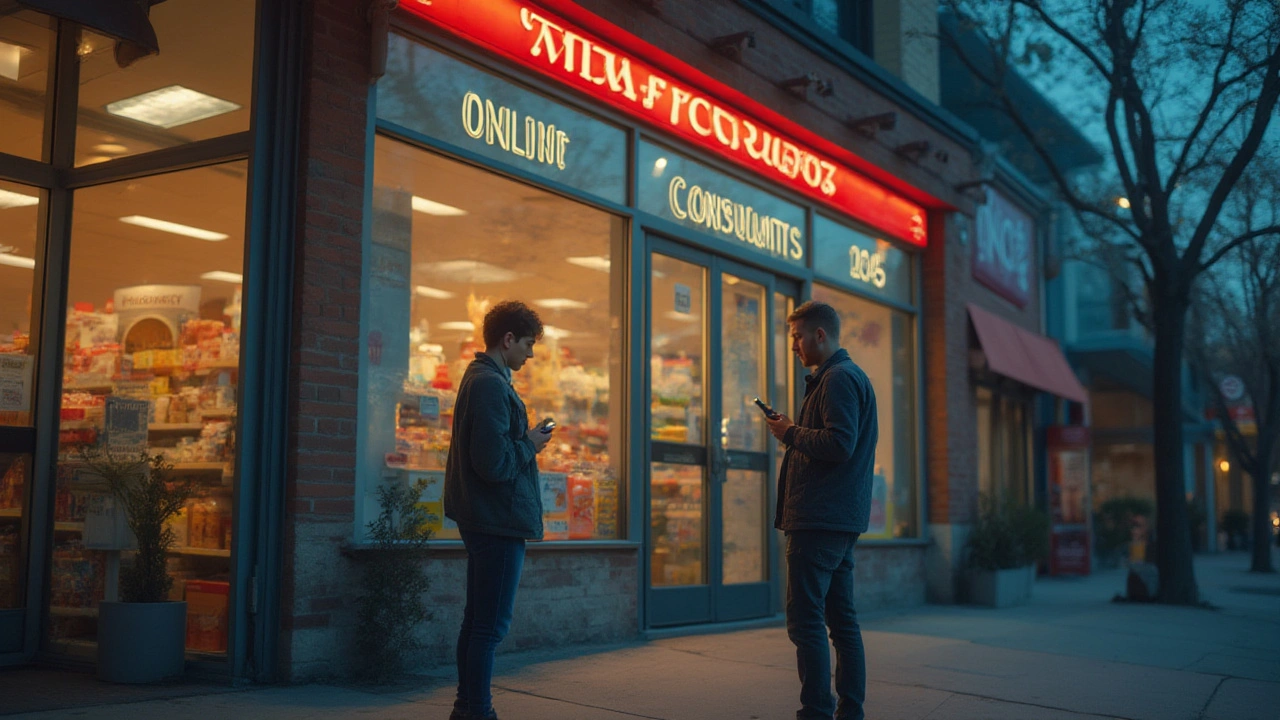
Smart Shopping: Tips and Warnings for Safe Antibiotic Purchases
Here’s where things get really practical. Want to avoid the common pitfalls of online amoxicillin shopping? Think of these as your golden rules:
- Never share your antibiotics with friends or family. Their symptoms might look the same, but the bacteria (or virus) could be different, and you’ll only help breed resistant bugs.
- Keep a record of your order and the prescription. Saves headaches if there are delivery problems or questions later on.
- Watch for fake medication alerts—sign up for newsletters from the FDA’s Safety Recalls or use the MedWatch app to check for recalled lots.
- If in doubt, call the pharmacy and talk to a licensed pharmacist. Don’t trust chatbots or unverified “live support.”
- Double-check the active ingredient and dose. Counterfeits often have wrong or missing ingredients. If your pills look different than last time, call the company before taking any.
- Don’t fall for online “diagnosis” quizzes that promise antibiotics in five minutes. The CDC did a secret-shopper study in May 2024 and found that 80% of these quizzes recommended antibiotics for made-up symptoms. Only real healthcare providers can diagnose you properly.
- If you’re traveling and need a refill, use major chains with an international presence—like Walgreens or Boots. That way, your prescription will be accepted and filled safely worldwide.
- Always check the expiration date and never use expired antibiotics. Potency drops, and contamination risk increases with time.
Some quick table wisdom for spotting red flags in your order:
| Legit Amoxicillin Order | Suspicious Amoxicillin Order |
|---|---|
| Prescription required | No prescription, just click to buy |
| Clear pharmacy info (address, accreditation) | No traceable info, weird domain (like .ru or .cn) |
| Prices within normal ranges | Too cheap to be true |
| Professional packaging, patient leaflet | Loose pills, missing instructions |
Your health is precious and antibiotics are weapons, not toys. That’s easy to forget when shopping online feels like playing retail roulette. But if you stick to these steps, you’ll get the real deal and stay safe.


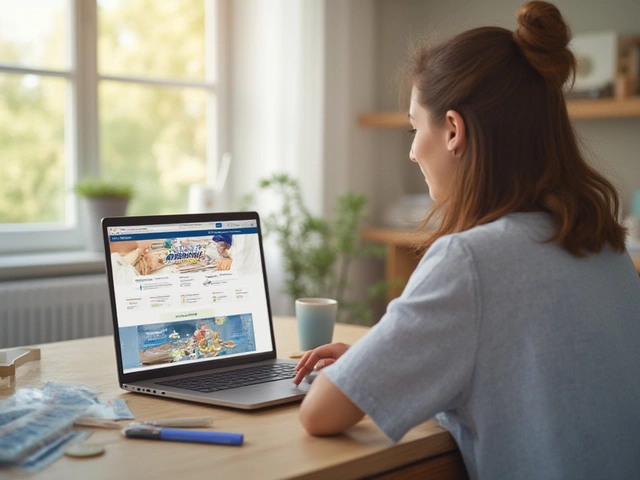
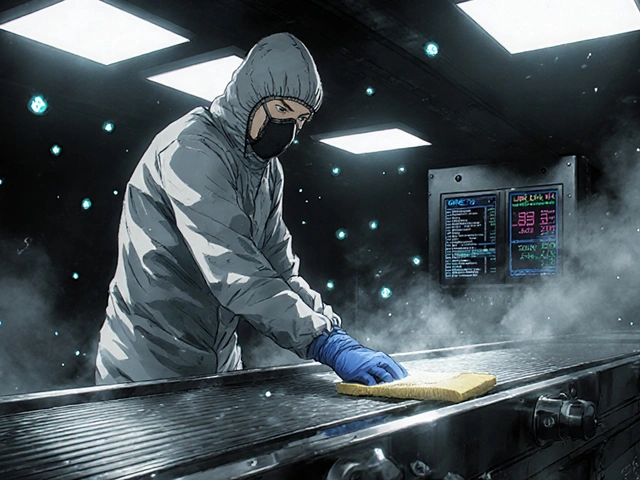
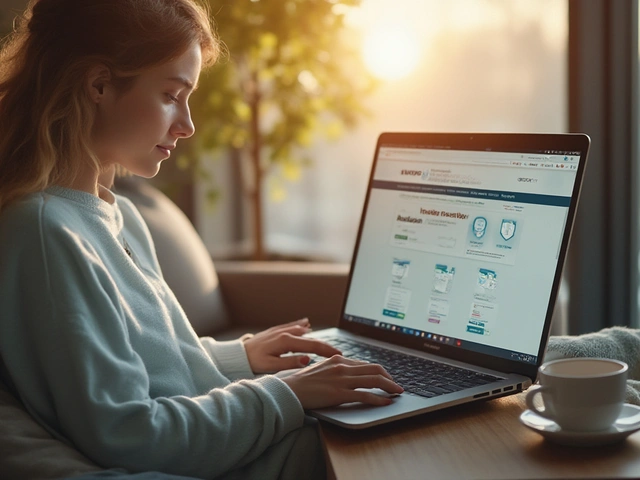

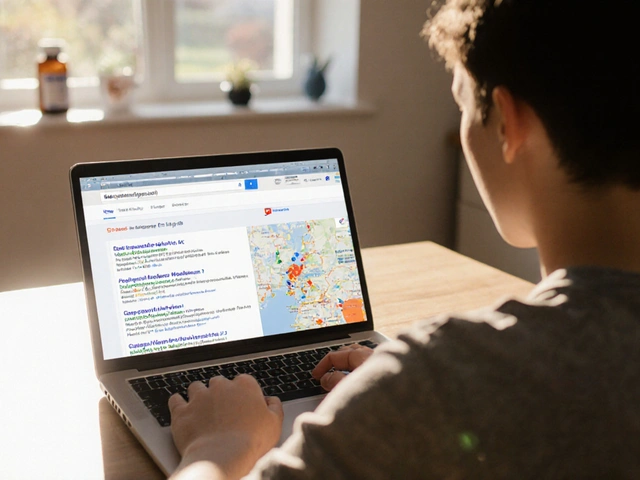

Posts Comments
Tom Shepherd July 12, 2025 AT 00:28
Just bought some amoxicillin off a site that looked legit-turned out to be sugar pills. Don’t be me.
Jauregui Goudy July 12, 2025 AT 21:14
I got prescribed amoxicillin last month after a bad ear infection-used GoodRx to find the cheapest pharmacy that actually required a script. Took 2 days to arrive, pills looked right, label had all the info. Don’t skip the steps. Your body will thank you.
shawn monroe July 13, 2025 AT 11:35
Let’s not sugarcoat this: the antibiotic resistance crisis is a direct consequence of consumer laziness and predatory online pharmacies exploiting regulatory gaps. The WHO’s 2024 surveillance data shows a 37% uptick in substandard antimicrobials in North American supply chains-most traced back to darknet vendors and fake .pharmacy clones. If you’re ordering without a script, you’re not just risking your life-you’re contributing to a global public health collapse.
Pharmacists aren’t gatekeepers; they’re the last line of defense against superbugs. Every unverified purchase is a vote for chaos.
And yes, I’ve seen the “$3 amoxicillin” scams. Those aren’t pills-they’re pharmaceutical Russian roulette with a 90% chance of zero active ingredient. You think you’re saving money? You’re paying with your microbiome.
Telehealth is fine if it’s HIPAA-compliant and prescribes based on clinical criteria, not a 5-question quiz. If the site doesn’t ask for your medical history or allergies, it’s not a pharmacy-it’s a scam.
And don’t even get me started on the “I’m in Canada, so it’s legal” myth. Customs seizes 12,000+ packages yearly. Your name gets flagged. Your future visa applications? Gone.
LegitScript’s 2025 report says 95% of search results are rogue. That’s not a coincidence. That’s algorithmic exploitation. You think Google’s to blame? No. You clicked. You chose.
Buy smart. Or don’t buy at all. But don’t pretend you’re being practical when you’re being reckless.
Emma Dovener July 15, 2025 AT 02:33
I’m a nurse in rural Ohio. We see the fallout every week-people who bought antibiotics online because they couldn’t afford a doctor’s visit. Some got better. Some ended up in the ER with allergic reactions or C. diff. The system fails people, but the answer isn’t to bypass it-it’s to fix it. Advocate for lower-cost clinics. Push for telehealth access. Don’t gamble with your health.
marie HUREL July 16, 2025 AT 12:02
My mom took amoxicillin for a tooth infection last year-got it through her dentist’s partnered online pharmacy. They required a video consult, uploaded her ID, and sent the script directly. Took three days. Cost $18. No issues. It’s possible to do it right. Just don’t cut corners.
Sue Haskett July 17, 2025 AT 20:36
Let me just say this: if you’re buying antibiotics online without a prescription, you’re not being resourceful-you’re being dangerously irresponsible. And yes, I’m calling you out. Not because I’m a buzzkill, but because I’ve seen what happens when people treat medicine like Amazon Prime. It’s not a product. It’s a controlled substance. And your life isn’t a coupon code.
Also, stop sharing your meds. Seriously. Stop. Your cousin’s sore throat is not your ear infection. Bacteria don’t care about your family ties. They just multiply. And now, thanks to you, they’re resistant.
And if you’re reading this and thinking, “But I’ve done it before and I’m fine,”-congrats, you’ve been lucky. Luck isn’t a strategy. It’s a gamble. And the house always wins.
Rebecca Price July 18, 2025 AT 18:04
Oh, so now we’re all supposed to be medical detectives? “Oh, I googled my symptoms and found a site that says I need amoxicillin.” Wow. That’s brilliant. Next you’ll be prescribing insulin from a TikTok ad.
Let’s be real: the real problem isn’t the shady pharmacies-it’s the broken healthcare system that makes people feel like they have no choice. But that doesn’t make buying unregulated antibiotics okay. It makes it tragic.
And yes, I know you’re tired of paying $400 for a 15-minute visit. I am too. But the answer isn’t to risk your life on a .xyz domain with a stock photo of a pharmacist.
Maybe we should be yelling at lawmakers, not at each other. But until then-don’t be the reason someone else gets a superbug.
Frances Melendez July 19, 2025 AT 05:58
People who buy antibiotics online are just one step away from injecting bleach because “a YouTube video said it cured COVID.” You’re not brave-you’re a walking biohazard. And if you think you’re helping yourself, you’re just helping the next person who gets a lethal infection because you helped breed the monster.
Jonah Thunderbolt July 21, 2025 AT 01:08
Look, I get it. You’re busy. You’re stressed. You don’t have time for the medical-industrial complex. But let’s be honest: you’re not a rebel-you’re a statistic waiting to happen. And you know what? You’re not even cool for doing it. You’re just another guy who thinks he’s smarter than 50 years of medical science.
And don’t even get me started on the “I’m from India, so it’s fine” crowd. No, sweetheart. Just because your uncle buys meds at the market doesn’t mean your U.S. Customs agent will care. You think they’re gonna say, “Oh, he’s cultural”? Nah. They’re gonna say, “Seized. Deported. Next.” 😒
And the emojis? I’m not even mad. Just disappointed. 🥲
Jebari Lewis July 21, 2025 AT 11:12
Amoxicillin resistance is not a theoretical concern-it’s a clinical emergency. The 2025 Lancet study showed that 68% of community-acquired strep throat strains in the Midwest now show intermediate resistance to amoxicillin. That’s not a typo. That’s your next sore throat. And if you self-medicate with counterfeit pills, you’re not treating it-you’re selecting for the next pandemic-grade strain.
Legitimate online pharmacies are not the enemy. The unregulated ones are. But the only way to distinguish them is through accreditation: VIPPS, CIPA, NABP. If it doesn’t display these, it’s not a pharmacy-it’s a phishing site with a pill bottle.
And yes, I checked. The FDA’s 2025 recall database includes 17 amoxicillin lots from overseas vendors. All were sold as “Canadian.” None were. All were laced with contaminants. One contained heavy metals. Another had antifungal compounds. You don’t want that in your bloodstream.
Stop romanticizing the gray market. It’s not freedom. It’s fraud. And it’s killing people.
archana das July 22, 2025 AT 16:39
In India, we buy amoxicillin without prescription at the corner shop-it’s normal. But I know people in the US who get sick and can’t afford care. So I understand why they go online. But I also know someone who got sick from fake pills. So I say: if you must, at least check if the pharmacy has a real pharmacist you can call. Not a bot. Not a chat window. A real person with a license.
Lauren Zableckis July 23, 2025 AT 17:18
I used to think buying meds online was fine until my friend’s kid had a reaction to a bottle they ordered. Turned out the pills were expired and had mold. That’s not a story. That’s a nightmare. Don’t risk it.
Write a comment